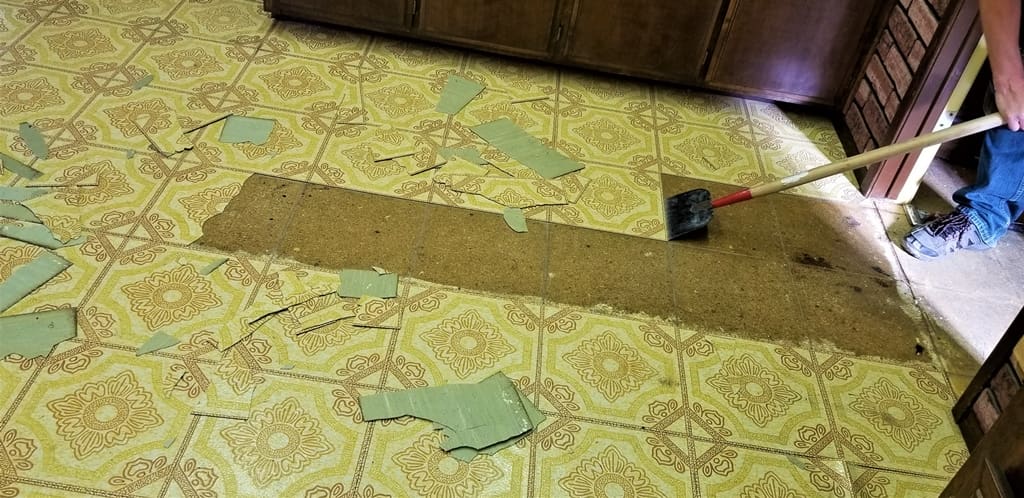As a homeowner, ensuring the safety of your family and property is a top priority. One potential hazard that may lurk in older homes is asbestos. This naturally occurring mineral was once widely used in construction for its insulation and fire-resistant properties. The presence of asbestos in your home does not necessarily mean there is a problem. Generally, material in good condition does not create a hazard. However, prolonged exposure to asbestos fibers can pose serious health risks.
Understanding Asbestos
Asbestos is a naturally occurring mineral that gained popularity in the construction industry for its remarkable heat resistance and insulating properties. Comprising six fibrous minerals, including chrysotile, amosite, and crocidolite, asbestos was extensively used in various building materials until its health hazards became evident. When asbestos-containing materials are disturbed or damaged, microscopic fibers are released into the air, posing serious health risks when inhaled. These fibers can lead to respiratory issues, lung diseases, and, in extreme cases, fatal conditions like mesothelioma. Asbestos was commonly integrated into homes built before the 1980s, making it essential for homeowners to be vigilant and take proactive steps to identify and address its presence in their living spaces. Understanding the nature of asbestos is crucial for prioritizing the safety and well-being of your household.
What You Shouldn’t Do

The first step in dealing with asbestos is to identify its presence. Asbestos may be found in various materials, including insulation, roofing, flooring, and plaster. Diving into a home improvement project on an older home without taking necessary precautions could be a recipe for disaster. Asbestos must be handled safely and removed properly to avoid serious health risks. If you suspect asbestos materials in your home, immediately stop any renovation projects until you’ve had proper testing conducted.
Identifying Asbestos in Your Home
If your home was built before the 1980s, there’s a chance it contains asbestos. If left undisturbed, asbestos may not post a threat, however it is important to know what to look for. Common asbestos-containing materials include:
- Insulation: Asbestos was commonly used in insulation materials. Check attics and walls for loose, fluffy insulation. Asbestos was also used in HVAC duct insulation, usually in flat or corrugated paper form.
- Floor Tiles: Vinyl floor tiles and the adhesive used to install them may contain asbestos. If you’re planning to renovate, take precautions.
- Roofing Materials: Some older roofing materials, like shingles and felt, may contain asbestos. Seek professional advice before attempting any roof repairs.
- Window caulking and glazing: Some older windows may include caulk and glaze that was formulated with asbestos.
- Plaster: Asbestos was incorporated in some plaster in older homes built prior to the 1980s.
- Paint: Some forms of paint may contain asbestos.
Asbestos Testing
The mere presence of asbestos in your home does not necessarily pose a threat if left undisturbed. The danger comes from asbestos that is damaged, which can release fibers. However, it is very easy to accidentally disturb asbestos during regular home maintenance or renovations. Sawing, drilling, flooring removal, etc. can result to damage to asbestos and significantly raise the threat. If you suspect asbestos in your home, it’s crucial to conduct asbestos testing. Professional asbestos inspectors can take samples and analyze them to determine the presence and concentration of asbestos fibers. Testing is the key to understanding the extent of the issue and planning appropriate remediation. Once completed, inspectors will provide you with a report with recommendations for corrections or prevention.
Professional Asbestos Abatement

Dealing with asbestos is not a DIY project. Professional asbestos abatement services should be engaged to safely remove and dispose of asbestos-containing materials. Certified abatement professionals have the necessary training and equipment to handle asbestos safely.
Creating a Safer Living Space
Once asbestos has been removed, take additional steps to ensure your home remains a safe environment. Consider these precautions:
- Regular Inspections: Schedule periodic inspections for asbestos and other potential hazards, especially if you are planning any home renovations or improvements.
- Proper Ventilation: Ensure good ventilation to prevent the buildup of indoor pollutants.
- Education and Awareness: Stay informed about asbestos and other environmental risks, and educate your family on safety measures.
By taking these proactive measures, you can create a healthier living space for your family. If you’re unsure about the asbestos status in your home, consult with professionals and prioritize the safety of your loved ones.
#AsbestosRemoval #HomeSafety #AsbestosAbatement
